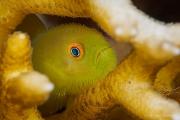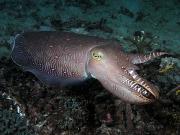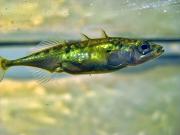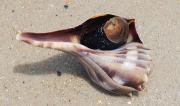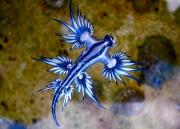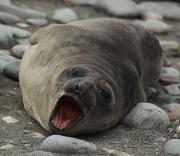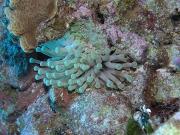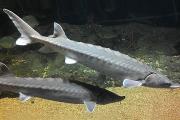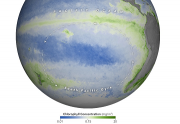You’ve probably heard that birds of a feather flock together. It turns out the same may be true for reef fish called emerald coral gobies. These fish live in small groups that include a single breeding pair and a host of subordinates who are ready to step in and take over as the male or female breeder if one of them dies. Scientists have learned from past research that these non-breeding subordinate gobies stick around in each group because being together offers them safety. The remaining question was why the larger breeders were willing to share space and resources with the hangers-on.
Articles
The Marine Science Institute's monthly column, Science and the SeaTM, is an informative and entertaining article that explains many interesting features of the marine environment and the creatures that live there. Science and the SeaTM articles appear monthly in one of Texas' most widely read fishing magazines, Texas Saltwater Fishing, the Port Aransas South Jetty newspaper, the Flour Bluff News, and the Island Moon newspaper. Our article archive is available also on our website.
If you receive a slice of pie but learn you will get a whole pie to yourself if you can wait ten minutes, could you wait? Scientists previously thought only humans and other apes could delay gratification. Then they learned crows and parrots could wait for better rewards too. It turns out cuttlefish, a relative of octopuses and squid, have the same ability to forgo one treat to wait for a more desirable one.
Whether it’s a swagger or waddle, a strut or a prance, the way a person walks can reveal a lot about their personality before they say a word. It turns out, the same may be true for fish. We don’t exactly have words, yet, for what a swordfish’s swagger or a sturgeon’s strut might look like, but scientists may soon. A group of researchers recently documented the fin movements of three-spined sticklebacks and found them to be distinctive enough to identify each fish by how it swam.
Crunch! Connoisseurs of party food can often tell what kind of chips their friends are eating while watching the game by the crunch the chip makes. But all that crunching is usually annoying background noise. Underwater, though, it’s a different story. If scientists could tell which shellfish a predator is eating by the sound of its shell cracking open, they could track natural trends in predation on clams, conchs, oysters and other shellfish—important information for the seafood industry and conservation efforts.
Dragons usually conjure images of massive, fire-breathing reptiles that fly through the air. But the dragons that have been showing up on Texas beaches recently are tinier than your thumb—and they’re in the water, not the air. Blue dragon sea slugs can’t turn you into a crispy critter with their breath, but these deceptively beautiful little creatures can deliver a sting that hurts more than second-degree burns.
You might think spending ten months of the year in icy waters, diving for hours deep under the surface, would be enough to discourage lice from hitchhiking and feeding on you. But you would be wrong. Southern elephant seals must deal with the same bloodsucking insects that pester so many other mammals, including humans.
Imagine if gorging on Thanksgiving dinner and the week’s leftovers caused you to grow an extra arm instead of adding inches to your waistline. The idea sounds crazy—unless you’re a sea anemone. These reef-dwelling creatures look like colorful flowers, but they are actually animals related to coral and jellyfish. Like coral, sea anemones spend their entire lives attached to the sea floor and hardly move. That means they needed to evolve ways to survive when environmental conditions around them change, including shifts in the availability of food.
It’s not often that a fish’s genetic analysis tells us something about human history, but that’s exactly what a discovery at the bottom of the Baltic Sea has done. The well-preserved remains of a fish from a royal shipwreck provides insight into both Scandinavian politics and the Baltic Sea’s ecosystem five centuries ago.
Scientists have known for years that microorganisms exist throughout the ancient layers of sediment hundreds of feet below the ocean’s floor. But it wasn’t clear whether those microbes are dead, alive or dormant. Despite being millions of years old, it turns out they are not dead. They are just hungry.

